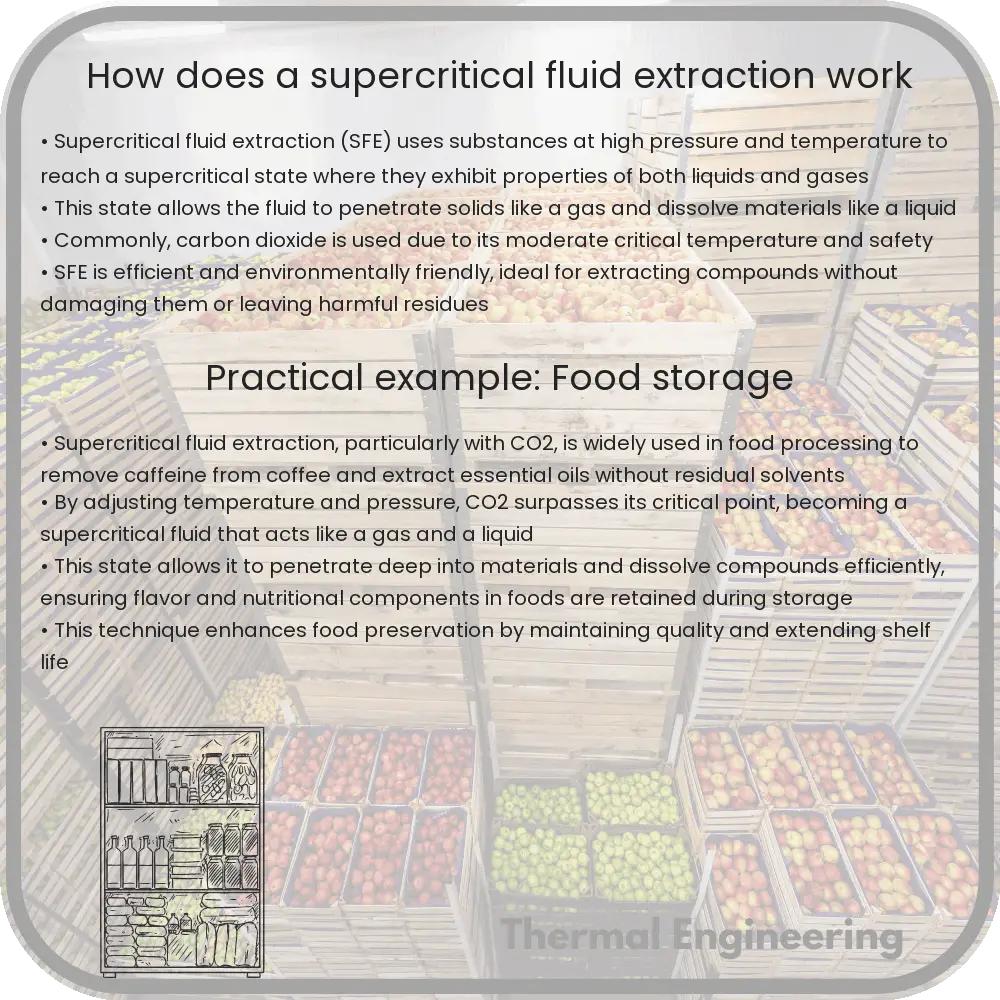Supercritical Fluid Extraction (SFE) is a high-efficiency, eco-friendly method used to separate substances using supercritical CO2 as a solvent.

Understanding Supercritical Fluid Extraction
Supercritical Fluid Extraction (SFE) is a sophisticated extraction technique used primarily in the pharmaceutical, food, and environmental industries to separate one component (the extract) from another (the matrix) using supercritical fluids as the extracting solvent. The process is highly regarded for its efficiency and environmental friendliness, as it typically uses supercritical carbon dioxide (CO2) instead of chemical solvents.
What Are Supercritical Fluids?
Supercritical fluids are substances that are above their critical temperature and pressure, where they exhibit unique properties between liquids and gases. In this state, these fluids can penetrate materials like a gas but dissolve materials like a liquid. Supercritical CO2, which is the most commonly used supercritical fluid, has a critical point at approximately 31.1°C (88°F) and 73.8 bar (1071 psi).
How Does Supercritical Fluid Extraction Work?
The process of Supercritical Fluid Extraction can be summarized in the following steps:
- Increasing Pressure and Temperature: CO2 is pressurized and heated until it reaches supercritical conditions, meaning it is heated and pressurized beyond its critical point.
- Solubilization: The supercritical CO2 passes through the raw material, acting as a solvent to dissolve the extractable substances.
- Separation: Once the supercritical CO2 dissolves the target compounds, the mixture is then passed into a separator at a lower pressure, leading to the precipitation of the extracted substances, while the CO2 returns to a gaseous state and is recycled or released.
- Collection: The extracted substances are collected and the CO2 can be recycled back into the system for further extractions.
Advantages of Using Supercritical CO2 as a Solvent
- Non-Toxicity: CO2 is non-toxic, making SFE a safer alternative to other methods that use hazardous chemicals.
- Efficiency: The solvent power and the diffusivity of supercritical CO2 can be adjusted by changing the temperature and pressure, making the process highly efficient.
- Low Temperature Processing: Since the critical temperature of CO2 is relatively low, SFE can be used for extracting heat-sensitive compounds without damaging them.
- Environmental Friendliness: CO2 is recycled in the system, leading to minimal environmental waste and emissions.
Applications of Supercritical Fluid Extraction
Supercritical Fluid Extraction is particularly advantageous in industries where purity and efficiency are paramount. Some of the common applications include:
- Decaffeination of Coffee and Tea: SFE is used to remove caffeine from coffee beans and tea leaves without affecting the flavor.
- Extraction of Flavors and Fragrances: Essential oils and other aroma compounds are often extracted from plants using SFE for use in perfumes and food products.
- Pharmaceuticals: SFE is used for the extraction of active ingredients from plants and other organic sources for pharmaceutical applications.
- Environmental Remediation: SFE is effective for cleaning up contaminated soils and extracting harmful compounds.
Supercritical Fluid Extraction represents a fascinating combination of basic physics principles with advanced engineering practices. Its ability to efficiently extract components without the use of harmful chemicals showcases a significant step forward in both industrial processing and environmental stewardship.